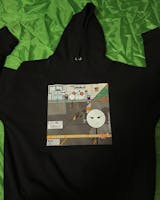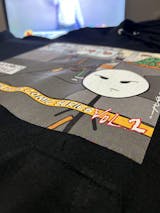In the custom DTF printing and personalization industry, it is an important tool. When it comes to creating custom t-shirts, mugs, hats and other personalized products, it's important to put the tool to good use. To improve your skills using a heat press, advanced techniques will come in handy. These can include combining several layers of transfer, using foil or glitter to add special effects, and experimenting with different surfaces. In this detailed guide, we will explore advanced custom heat transfer techniques.
Heat Press Power
High power consuming equipment, such as a custom heat transfer, can cause problems with circuit breakers when used with other electrical appliances on the same circuit. It is therefore important to use a dedicated electrical circuit for your heat presses. You must ensure that the total power of other equipment on the same circuit does not exceed the carrying capacity of the circuit. The maximum power consumption of the DTF transfer must be indicated on its nameplate.
Design and Transfer Preparation
You should take care when creating your design and preparing for the transfer process. Choose high quality sublimation inks, select the appropriate transfer paper and project your designs where necessary. You should align your designs properly on the substrate to avoid misprints and ensure the desired positions.
Using Foil
When using heat-applied adhesives and foils, you should pay attention to the choice of a proper substrate for best results. Materials such as tightly woven cotton or synthetic fabrics such as polyester are usually preferred. DTF heat transfer foils provide excellent results not only on T-shirts, but also on accessories, bags and hats. You can try using it in different areas with your creativity!
If you like the look of metallic surfaces, but don't want a mirror-like shine, cover the foil-printed design with a layer of cover and apply heat for an additional 2-3 seconds. In this way, you can achieve a shimmering but low-gloss look that will please your customers.
Do Not Use Extension Cords
It is safer to plug the heat press directly into a wall outlet instead of using an extension cord. Using an extension cord can lead to overheating of the cables or plugs and even to your heat press not working properly due to high resistance at the power input.
If you have no choice but to use one, you should make sure that you use cables that are certified for the power consumption of your heat press. However, check the certification indicated on the extension cable. If it is not, do not use the extension cord. Also, avoid using an extension cord coiled on a reel, as this can get hot enough to be a fire hazard.
Regular Maintenance and Cleaning
Regular maintenance and cleaning of your DTF transfer will ensure consistent performance. Review the condition of the platen and check for signs of wear or damage. Keep the machine free of debris. A well-maintained heat press makes it easier for you to achieve reliable and high-quality transfers.
Time, Temperature and Pressure Factor
To ensure perfect transfer, you must control the time, temperature and pressure. Carefully review the recommended settings for your specific materials and adjust them accordingly. Remember that different substrates may require different combinations of time, temperature and pressure. It is therefore important to make specific adjustments for each substrate. We recommend that you work carefully to achieve optimum results at every step, without losing sight of the technical details.
With advanced techniques you can achieve the best DTF printing results. Thanks to these methods, it is also possible to satisfy customers.








